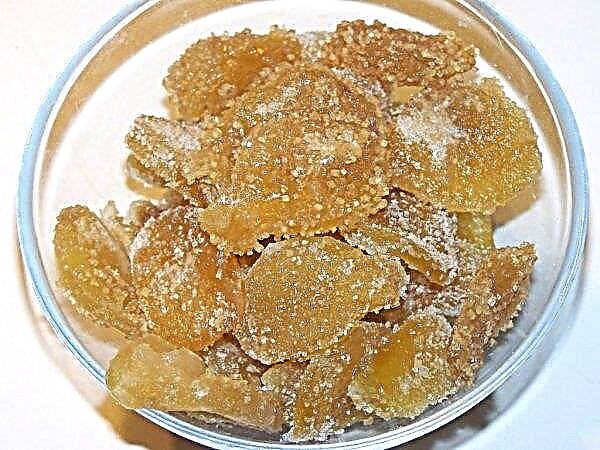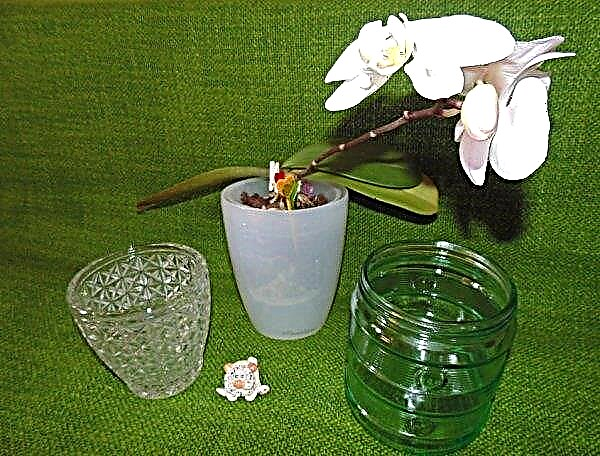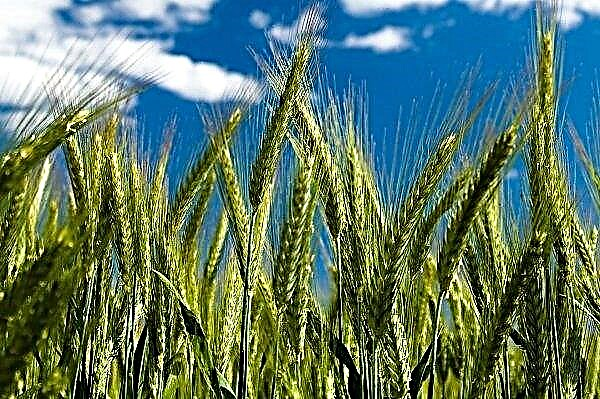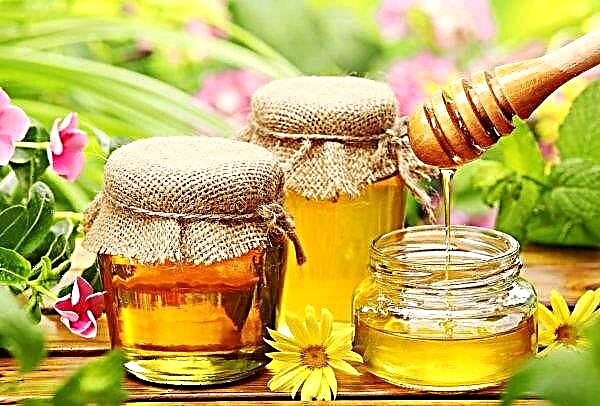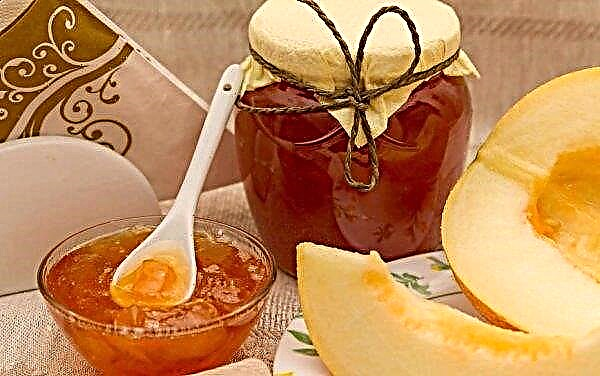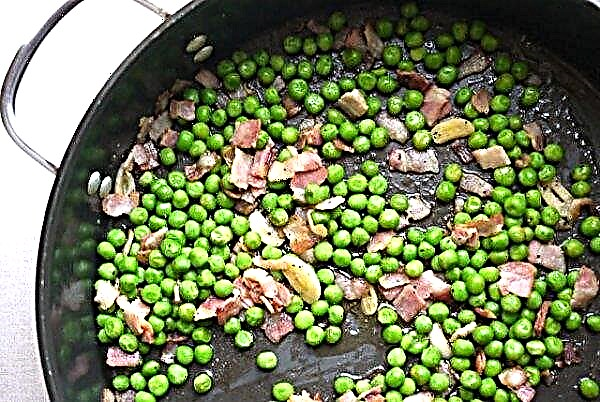Many consumers determine the naturalness of honey by its color, smell, viscosity. For this, professionals do not need to see the product, it is enough to find out its diastase number. The larger it is, the higher the quality of the product. What this parameter is, what it affects, what factors depend on how to calculate it yourself - more on this later.
Diastatic number of honey - what is it?
The first to talk about diastasis was the Frenchman Ansel Paya. In the 30s. XIX century, he summarized his numerous chemical studies by an article in which he focused on the digestion enzyme amylase. Today, diastase and amylase are related concepts, which are the main criterion for the naturalness and maturity of beekeeping products.
According to the requirements of international standards, the diastase number of honey should correspond to a range from 3 to 50 units. This is the number of milliliters of 1% soluble starch, decomposed within 60 minutes by amylolytic enzymes in one gram of anhydrous substance (1 g of starch is equal to 1 activity unit).Did you know? The ancient Romans and Hellenes highly appreciated honey and even used it as a currency: they bought goods, paid fines.
This quality indicator is characterized by sensitivity to temperature increase, which allows it to be an indicator of the thermal treatment of honey. Its amylase activity increases upon heating to + 60 ° С and decreases when the product is cooled to –40 ...– 50 ° С. In the first case, intense enzymatic destruction occurs, and in the second, on the contrary, its inhibition.

After long studies of bee delicacies, scientists came to the conclusion that with each year of its storage, the diastase number decreases. Of particular influence on this process is the ambient temperature. It was noted: in products that stood for a year at room temperature, diastase activity decreased by 25-30%, another year later its value decreased by 50%.
The diastase of a bee product depends on its content, so it is different for each species. Significant differences exist in the geographical aspect of the analysis. This is due to the intensity of flowering plants and the aroma of their nectar. That is why the diastase number of honey produced in the southern regions of Russia corresponds to 5–10 units, and Siberian - 20–50 units.
Did you know? To get a 100-gram portion of honey, one bee needs to fly around 46 thousand km, which is equal to the length of the equator.
Why determine the diastase number?
The amount of diastase is important to know in order to possess information about the healing power and quality of honey. Also, this indicator will help to know whether the product has been subjected to heat. For example, in a substance that has undergone heat treatment at temperatures above + 60 ° C or has been stored for a long time under inappropriate conditions, the diastase number will drop to 0. After all, enzymes are not characterized by stability, which is why they break down over time.
What determines and what affects the amount of diastase?
Despite the fact that the modern market is full of Chinese-made bee products, experts consider Israeli honey to be the best in quality. The reason for this is the high content of enzymes produced by bee saliva. In a chain of biological reactions, they act as catalysts that stimulate metabolic processes.

When enzymatic substances interact with other components, glucose breaks down, resulting in the formation of hydrogen peroxide. This unstable element is subject to rapid destruction, resulting in mold, fungi and pathogenic microbes.
Amylase destroys starchy substances, transforming them into maltose. These are sweet crystals that form when the product ripens. In buckwheat honey, not more than 6% of maltose from the amount of carbohydrates present is found, and in chestnut only 4%. The highest content of maltose in linden and acacia honey is 5–8%. The greater the activity of this component, the higher the diastase number.
Did you know? Israel is home to the most expensive honey in the world. A kilogram of goodies in the country can be bought for 17-20 dollars.
The process of producing honey and enriching it with enzymes is very complex. To fill a goiter with nectar, it is necessary to fly over more than a thousand flowers. After swallowing, the insect burps the mass already saturated with amylase.
The amount of its production is more affected by:
- pollen quality;
- air temperature;
- saturation of the bee organism with enzymes (depends on the climatic characteristics of a particular area, therefore honey obtained from Siberia, Udmurtia, the Carpathians and Crimea differs significantly in useful qualities).
It has been observed that bee products produced in warm regions contain much less amylase. For example, if the diastase number of Altai honey is 10 units, then in Yakut it increases to 25 units. This is due to the severity of external conditions, which provoke the production of the necessary enzyme in the bee's body.
Diastase number determination
To find out the reliable number of diastases in a bee treat is possible only with the help of laboratory tests. In home testing, the result will be very approximate.

To independently learn about amylase activity, you need:
- Pour cold water into a transparent container with a lid (it is better to use a bottle) and dissolve honey in it (in a ratio of 10%).
- Add another half teaspoon of water.
- Dissolve a pinch of table salt in a teaspoon of water, and then add it to the honey liquid.
- Combine a pinch of starch with half a teaspoon of water, stir and add to other ingredients.
- Close the vessel with a lid and leave it in a water bath for 1 hour, maintaining a moderate temperature.
- After cool and drip iodine inside.
Important! Crystallized honey should not be melted to a liquid state at a temperature above + 50 ° C. Then poisonous compounds harmful to human health are formed in the product.
As a result of the manipulations, the liquid should change color. The activity of the amylase present in the composition depends on its saturation. If the mixture becomes yellow or colorless - diastasis is 11 units. (on the Gauth scale). All other variations (turbidity, the appearance of cyanotic inclusions) indicate a poor-quality product.
Range of diastase numbers by region
The activity of diastase in natural honey in the Russian Federation is regulated by GOST 19792-2001. The table below shows the minimum values of this quality parameter for each region of the country.
| Honey, depending on the region of manufacture (within the Russian Federation) | Diastase number, units | |
| Amur | 5 | |
| Altaic | 10 | |
| Bashkir | 10 | |
| Belgorod | 18 | |
| Bryansk | 14 | |
| Buryat | 18,7 | |
| Vladimirsky | 11 | |
| Vologda | 10 | |
| Voronezh | 12 | |
| Nizhnegorsky | 8 | |
| Dagestan | 10 | |
| Ivanovsky | 6 | |
| Irkutsk | 16 | |
| Kabardino-Balkarian | 10 | |
| Karelian | 15 | |
| Kemerovo | 17 | |
| Kostroma | 10 | |
| Kirovsky | 12,9 | |
| Sverdlovsk | 14,7–31,6 | |
| Krasnoyarsk | 6 | |
| Kurgan | 11 | |
| Leningradsky | 11 | |
| Mari | 6 | |
| Mordovian | 10,8 | |
| Moscow | 18 | |
| Novosibirsk | 10 | |
| Omsk | 10 | |
| Orenburg | 10 | |
| Oryol | 13 | |
| Penza | 18,9 | |
| Permian | 10 | |
| Seaside | 8 | |
| Pskov | 8,7 | |
| Rostov | 17,9 | |
| Ryazan | 10 | |
| Saratov | 1,5 | |
| North Ossetian | 14,8 | |
| Smolensky | 20 | |
| Stavropol | 13,8 | |
| Tambovsky | 10 | |
| Tomsk | 23 | |
| Tula | 18 | |
| Tyumen | 18 | |
| Udmurt | 20 | |
| Ulyanovsk | 6 | |
| Khabarovsk | 6 | |
| Chelyabinsk | 10,55 | |
| Yakut | 25 | |
Important! Honey is strictly contraindicated for people prone to allergic reactions.
How to use honey?
Doctors advise starting every morning with a teaspoon of honey. Such a treat helps to strengthen the immune forces and overall health.

However, in order to achieve maximum effect, it is recommended to consume the product, following the following rules:
- Do not overeat and remember the measure. An adult healthy person without contraindications per day is allowed 80–140 g (up to 2 tablespoons), and a child - 30–50 g (up to 2 teaspoons). Excess bee products are fraught with malfunctions of the nervous, digestive, cardiovascular systems, the development of diabetes, obesity, and allergic reactions.
- Do not dissolve or melt crystallized honey in hot water.. Such actions will trigger irreversible chemical processes, as a result of which dangerous toxins form in the treats.
- Do not swallow. Enjoy the honey aroma and taste. Experts say that it is in the process of resorption in the oral cavity that enzymatic substances are released. In the digestive organs, they are dehydrated.
- Do not combine honey with other foods.. Its use is in solo use, therefore it is recommended to eat a treat half an hour before meals (with normal gastrointestinal acidity) in the morning and before bedtime in the evening.
- After taking honey, rinse your mouth and brush your teeth.. These are caries preventative measures, because this product, due to the content of many sugar components, contributes to dental diseases.
Important! Children aged 2-3 years old should be given honey in limited portions, monitoring the body's response.
Honey Storage Features
Over time, the bee product loses some of its beneficial properties and begins to crystallize. Natural honey with the right temperature and moisture conditions can stand for years and not deteriorate.

In order to maximize the preservation of the useful characteristics of goodies, experts advise taking into account the following requirements:
- Stable temperature at the level of –6 ... + 20 ° С. The cellar is ideal as a storage. In a room where the air warms up to + 18 ... + 24 ° С, the sticky substance exfoliates, loses some vitamins and deteriorates. The minus temperature does not contribute to destruction, but only enhances the density, as a result of which the product becomes solid. A change in temperature is fraught with uneven crystallization.
- Use for storage only tightly closed dark glass, enameled, ceramic containers. In extreme cases, food grade plastic will do. Keep in mind that over time, the treat hardens and is difficult to get from vessels with a narrow neck. For such purposes, dishes made of iron, galvanized material, and enamel with chips are prohibited.
- Dry room. A high level of dampness will adversely affect the quality of the product, as it intensively absorbs moisture. Keep container tightly sealed. Otherwise, the substance will stretch with water and quickly deteriorate.
- Darkness. Do not leave the product in a sunny place. Under the influence of heat, it destroys many useful substances, including enzymes.
- Neutral Aroma Environment. Nearby with strongly smelling objects, the delicacy will borrow their aroma.
Important! When using honey instead of sugar, reduce its amount by half.
The high diastase number of honey is one of the most important signs of its naturalness, so this characteristic is important to consider when buying a beekeeping product.


